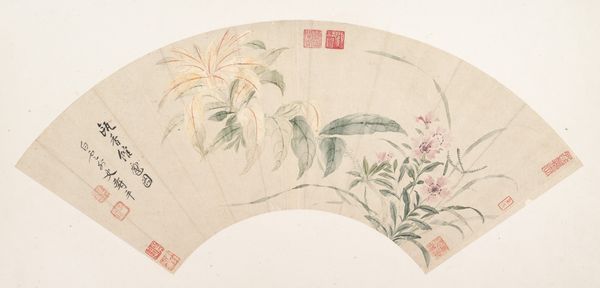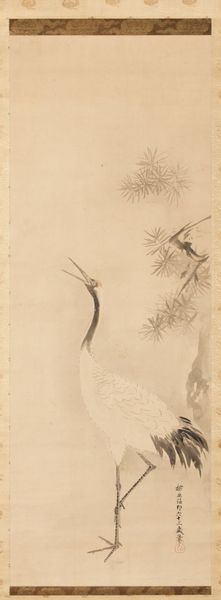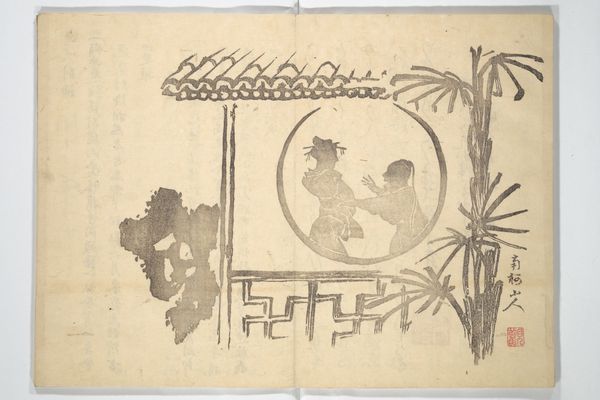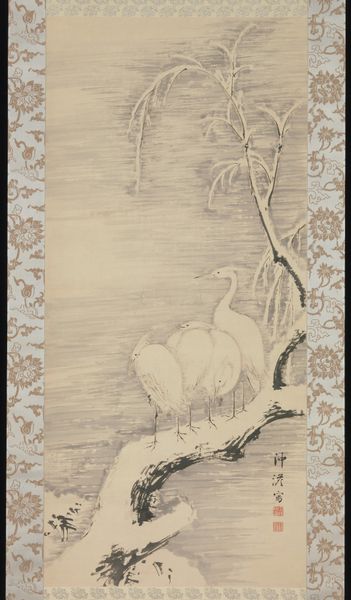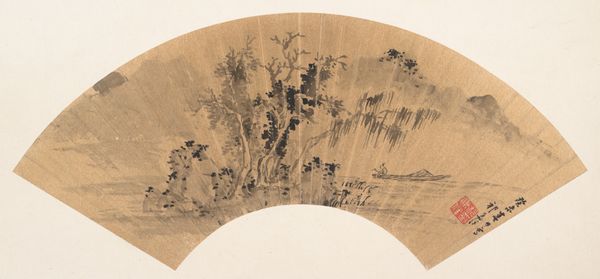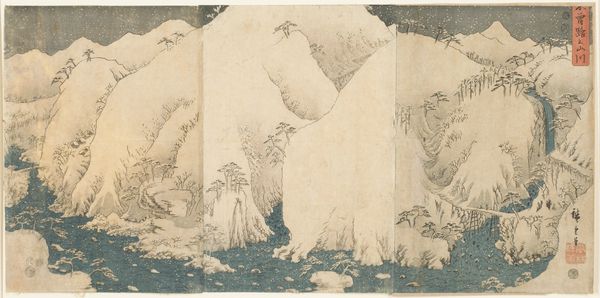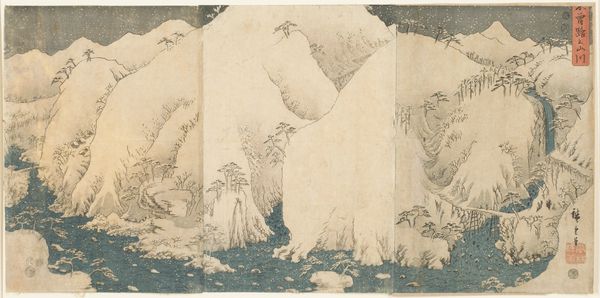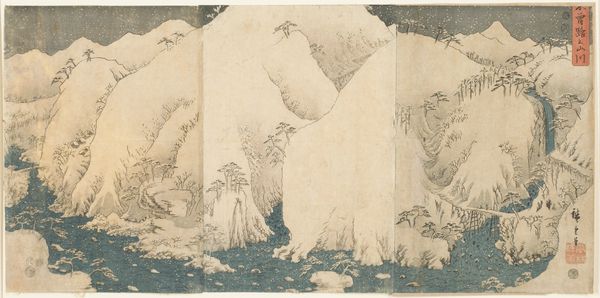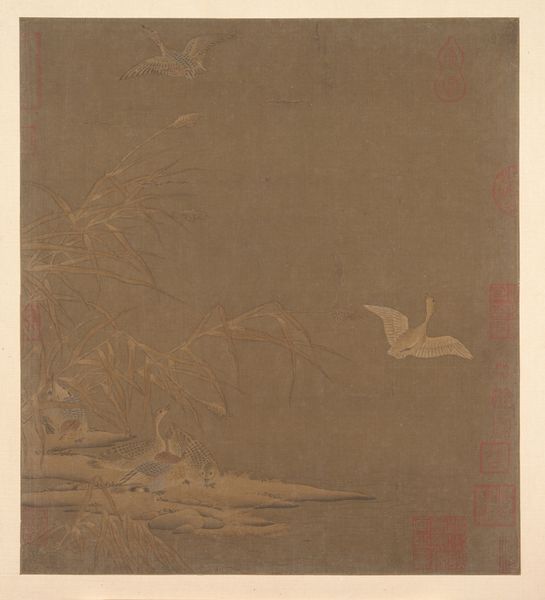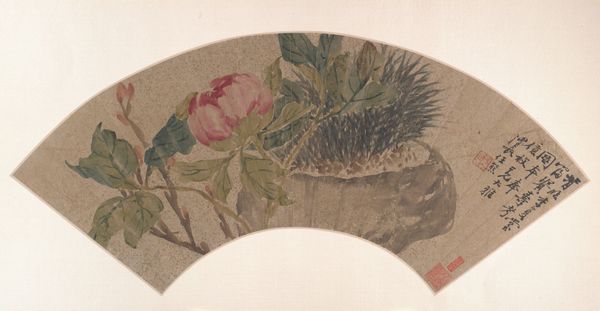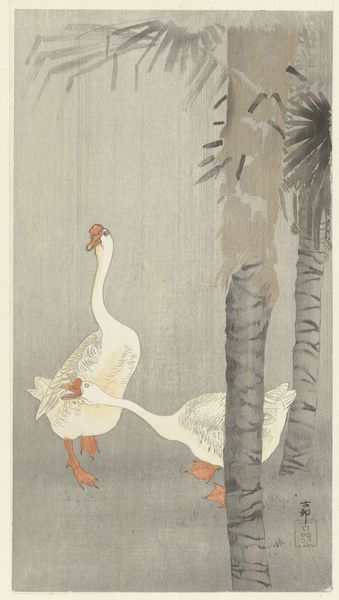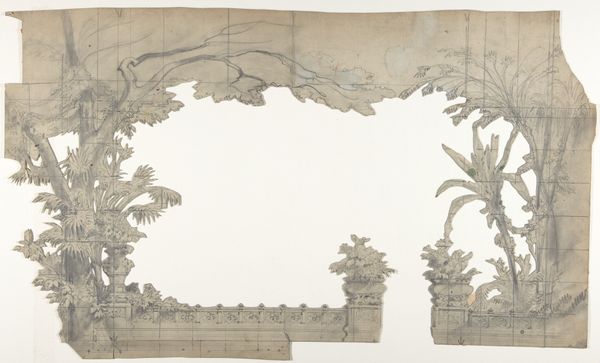
painting, paper, watercolor, ink
#
water colours
#
painting
#
asian-art
#
landscape
#
ukiyo-e
#
figuration
#
paper
#
watercolor
#
ink
#
watercolor
Dimensions: 6 1/2 x 20 3/8 in. (16.5 x 51.8 cm)
Copyright: Public Domain
Curator: Welcome. We're looking at “Landscape with Chicken,” a work created sometime during the Ming or Qing Dynasty, so between 1368 and 1911. It’s currently housed here at The Metropolitan Museum of Art. Editor: Immediately, I’m drawn to the simple elegance of the composition. The ink wash creates such delicate tonalities, a minimalist rendering of a natural scene. It feels remarkably modern, almost like an abstract gesture. Curator: The symbolism is compelling, isn't it? Chickens in Chinese art can represent courage, reliability, and punctuality. Consider how these values might be relevant to the society during the Ming and Qing dynasties, marked by dynastic shifts and social change. Editor: Absolutely, but I also see a formal balance in the brushstrokes—the calligraphic quality of the plants contrasting beautifully with the rounded form of the fan. How do you read the spatial relationships at work here? Curator: I see that balance too. However, let’s think about what it meant to depict the natural world at the time. This could be a subtle commentary on societal harmony or, conversely, the lack thereof. The chicken, a creature of the earth, perhaps acts as a proxy for the common person navigating tumultuous times. Editor: That adds a layer of interpretation I hadn't fully considered. But looking at the starkness of the ink against the paper, one cannot deny the pure visual language at work here, which is what I ultimately think this composition communicates. Curator: I can appreciate that. It's easy to see this work through multiple lenses: one way to consider art’s power, whether intentionally or unintentionally, is to reflect the prevailing currents and complexities of an era. It allows the voice of the individual, like that of a humble chicken, to perhaps shape broader understanding. Editor: Well said. I still maintain that the success of the composition hinges on its formal qualities, but I certainly can respect the piece as it interacts with socio-political awareness of that era.
Comments
No comments
Be the first to comment and join the conversation on the ultimate creative platform.
